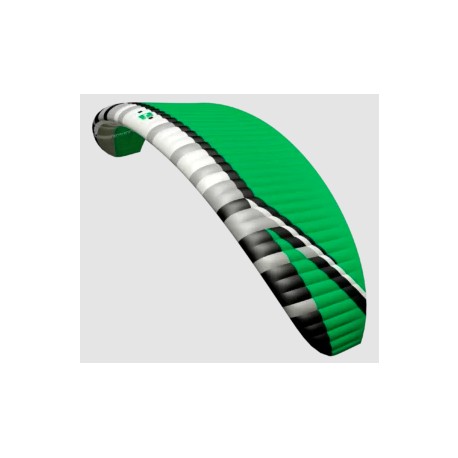Nav produktu
DUDEK - UNIVERSAL 1.1
New
Universal paraglider
Universal is the first free flying (EN B) paraglider ever which can be converted by its user into a full-blood paramotor canopy (conforming to the DGAC standard)
INFORMATION FROM MANUFACTURER WEBSITE
Universal is the first free flying (EN B) paraglider ever, which can be converted by its user into a full-blood paramotor canopy (conforming to the DGAC standard).
Universal is a great free-flying recreational paraglider, including cross-country flights. Beginning XC pilots will surely appreciate exceptional comfort in uneasy thermals, resulting from considerable amount of reflex traits present in the design.
On activating the trimmers and setting up the ALC+ steering, Universal becomes a full reflex paramotor wing, good for both leisure and cruise flying, thermalling, last but not least for initial paramotor training.
TECHNICAL DATA
| Size | 23 | 25.5 | 28 | 31 | 34 |
| Certification | EN/LTF B | EN/LTF B | EN/LTF B | EN/LTF B | – |
| Approval – ULM identification | yes | yes | yes | yes | yes |
| Cell number | 50 | 50 | 50 | 50 | 50 |
| Surface area flat [m2] | 23.00 | 25.50 | 28.00 | 31.00 | 34.00 |
| Surface area projected [m2] | 19.83 | 21.98 | 24.14 | 26.72 | 29.31 |
| Wingspan flat [m] | 10.83 | 11.40 | 11.95 | 12.57 | 13.17 |
| Wingspan projected [m] | 8.71 | 9.17 | 9.61 | 10.11 | 10.59 |
| Aspect ratio flat | 5,10 | ||||
| Aspect ratio projected | 3,83 | ||||
| Sink [m/s] | min = 1,1 | ||||
| Speed* [km/h] | min = 23; trim = 37-52; max = 57 (+/- 3 km/h)* | ||||
| Longest chord [mm] | 2612 | 2751 | 2882 | 3033 | 3176 |
| Shortest chord [mm] | 601 | 633 | 663 | 698 | 731 |
| Lines+risers length [m] | 6.82 | 7.18 | 7.53 | 7.92 | 8.29 |
| Total lines length [m] | 344.01 | 362.82 | 380.74 | 401.20 | 420.70 |
| Weight range PPG/PPGG*** [kg] | 60-95 | 70-115 | 90-140 | 110-170 | 135-215 |
| Weight range PG** [kg] | 60-75 | 70-95 | 90-115 | 110-140 | (135-170) |
| Weight of the wing [kg] | 5.6 | 5.95 | 6.4 | 6.85 | 7.35 |
| Distance betwen risers [cm] | 42 | 46 | 46 | 46 | 45-60 |
| Lines | Technora 90 & 140 & 190 & 280 & 340 & 420 | ||||
| Cloth | Porcher Classic 38 g/m2 Dominico 34 g/m2, Porcher Hard 40 g/m2, SR Scrim, SR Laminate 180 g/m2 | ||||
| Risers | Pasamon – Bydgoszcz, Polska | ||||
* Speeds are given as estimated for the middle wing size and the middle of its weight range. These speeds can vary within +/- 3 km / h depending on the size, take-off weight and additional factors such as air pressure and temperature.
** The basic rule is to choose the size of the wing so that the take-off weight is in the middle of the weight range. Less weight on the wing (lower range take-off weight) can be considered for foot take-off, when flying in calmer conditions, or when we want to improve economy. More experienced pilots who want to fly dynamically, have higher speed and fly in more demanding wind conditions can consider greater wing loading (take-off weight in the upper range). This is a common option among trike users.
*** Note – the canopy significantly changes its behavior with increasing wing loading. The greater the loads, the greater skill and concentration of the pilot are required.
| Sertifikācija | EN B |








